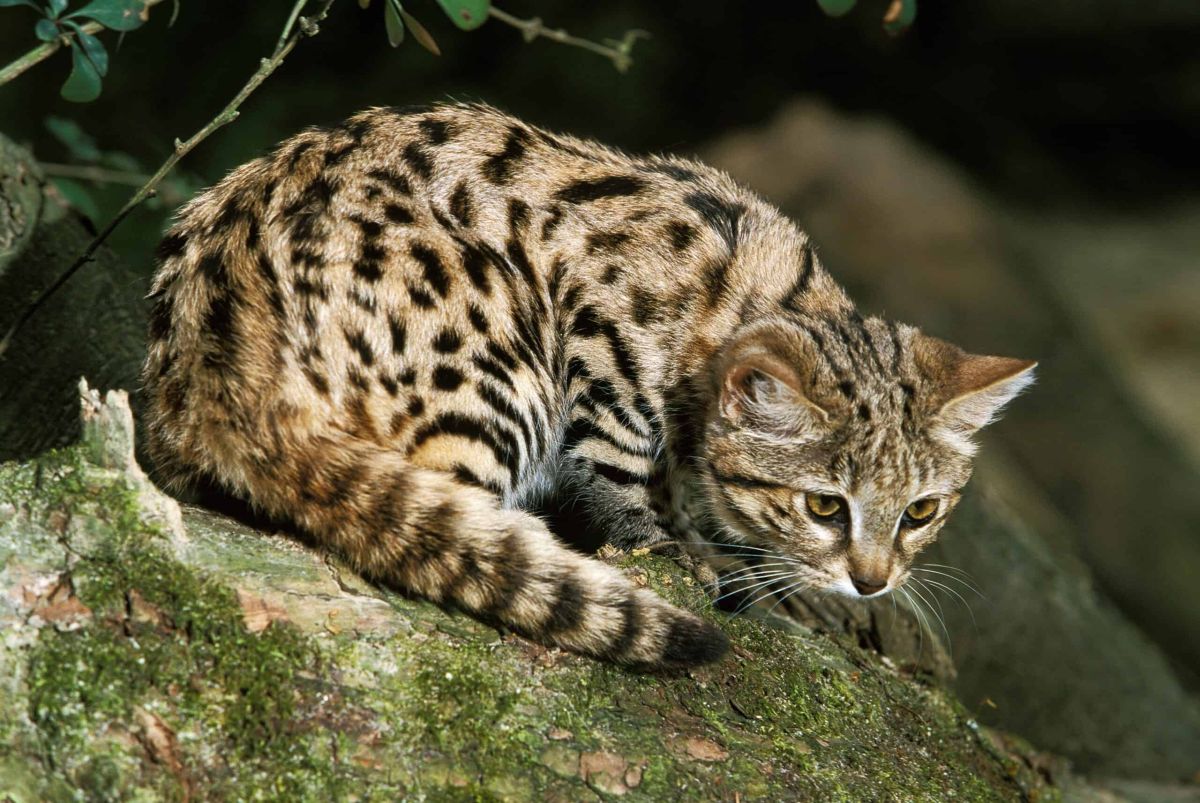The Black-footed Cat: Nature’s Pint-Sized Predator

Among the diverse array of wildlife inhabiting the arid grasslands and savannas of Southern Africa, the black-footed cat (Felis nigripes) is a standout species. Known for its striking appearance and formidable hunting skills, this small feline has garnered the interest of wildlife enthusiasts, researchers, and conservationists alike.
Physical Characteristics
The black-footed cat is a petite feline, measuring approximately 36 to 48 centimeters in body length, with a tail extending up to 25 centimeters. Weighing only between 1.5 to 2.5 kilograms, it is one of the smallest cat species in the world. Its coat is characterized by a sandy or light brown color, adorned with distinctive dark spots and stripes that provide effective camouflage in its natural habitat. True to its name, the black-footed cat has striking black markings on its paws, which serve as a point of identification.
Habitat and Distribution
The black-footed cat predominantly inhabits southern Africa, particularly in areas where grasslands, arid bush regions, and open savannas meet. This feline is highly adaptable, often favoring regions that are devoid of dense vegetation, as this allows for easier navigation while hunting and evading predators. Countries such as Botswana, Namibia, and South Africa are known to harbor populations of these elusive cats.
Behavior and Diet
The black-footed cat is primarily nocturnal, a behavior that aids in avoiding the heat of the day as well as reducing encounters with larger predators. Their exceptional vision and acute sense of hearing enable them to be highly efficient hunters during the night. This petite predator preys on a variety of small animals, including rodents, birds, insects, and reptiles. Notably, a single black-footed cat can catch several small prey items in one night, showcasing its remarkable hunting prowess.
Black-footed cats are solitary animals, and territorial and mating behaviors are observed during the breeding season. Females typically give birth to 1 to 3 kittens, which rely on their mother for nourishment and protection until they are strong enough to venture out on their own.
Conservation Status and Threats
Despite their tenacity in the wild, black-footed cats face several threats that have led to a decline in their populations. Habitat loss, primarily due to agricultural expansion and human encroachment, poses a significant risk to these cats. Additionally, they are often victims of road traffic and are hunted for their pelts, although illegal hunting activities have decreased in some areas.
The International Union for Conservation of Nature (IUCN) has classified the black-footed cat as “Least Concern,” but their population trends warrant ongoing monitoring. Conservation efforts are essential to ensure safe habitats and increased awareness among local communities regarding the ecological role of these small felines. Encouraging coexistence between humans and wildlife is critical for the survival of the black-footed cat.
The Role in Ecosystems
As a small predator, the black-footed cat plays a vital role in controlling rodent populations in its habitat. The balance they maintain helps prevent the overpopulation of these prey species, which can have cascading effects on the ecosystem. Furthermore, their presence signifies a healthy and diverse environment, serving as an indicator of ecosystem health.
Conclusion
The black-footed cat, while small in stature, embodies the resilience and adaptability of wildlife in the face of changing environments. As we celebrate its remarkable hunting skills and unique behaviors, it is imperative to recognize the need for conservation efforts that ensure the sustainability of its populations. Protecting this charming feline not only safeguards a species but also preserves the biodiversity of the ecosystems they inhabit. Increased public awareness and commitment to conservation initiatives will be essential in securing a future for the black-footed cat in the wild.



